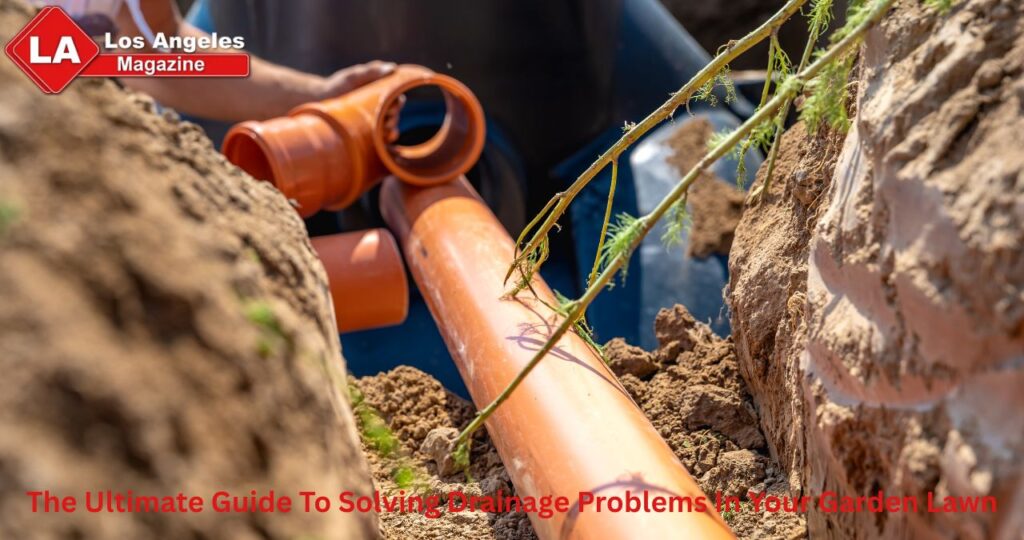Building a calming garden complete with a verdant green lawn is gratifying, and drainage worries can make it a headache in no time. All kinds of problems such as waterlogged soil and root rot, among many other things, result from poor drainage which may all damage your plants. It is central with regards to caring for drainage issues to promote healthy plant growth in your garden. In this text, we will cover a number of drainage problems, what causes them, and how to solve them to help your garden succeed.
Understanding Drainage Problems
What Is Poor Drainage?
If you garden does not drain well, water sits and pools, and the soil is saturated, plants may be unhealthy. There are several factors that result in poor drainage, these include the composition of the soil, layout of the garden, and any other structures available.
Common Causes of Drainage Issues
- Soil Type: Clay soil will succeed in storing a lot of water but water runs through sandy soil very rapidly. Learning your soil quality gives you valuable insights for enhancing the drainage in your garden.
- Topography: Water can accumulate in areas of your garden in case it is located at slope levels. On the contrary, the problem with level ground is that when water has got nowhere to go off it can as quickly become a bog.
- Obstructions: Penetrations like fences, hedges or buildings may block the flow of water, and make it pool at some parts of your garden.
- Compacted Soil: Soil compaction can occur as a result of vehicular or pedestrian traffic on top of the soil that degrades its water absorbing properties.
Identifying Drainage Issues
Signs of Poor Drainage
The ability to identify the signs of bad drainage is an essential first step into resolving the problem. Look for:
● Puddles: Water left after rainfall on your garden surface.
● Moss or Algae: When your garden becomes too moist for too long, these organisms are likely to appear.
● Soggy Soil: When you observe ground is soaking wet or squishy, it means that drainage is not operating properly.
● Root Rot: If your plants are wilting and developing yellow leaves, this may be an indication of root rot because of consistent over watering.
Solutions for Drainage Problems
1. Improve Soil Structure
The abilities of your soil to drain water can benefit greatly from the addition of amendments to your soil. Organic inputs in the form of compost or composted manure may help strengthen the soil and add potential for retaining water without exceeding overmoisture.
2. Create Contours
To correct flat or low-lying areas in your garden you may decide to contour the land. By changes in landscape, you can guarantee that water flows around your plants rather than through their root zones. By varying the level slightly, even by elevating the soil (forming little hilts or slopes), water flows can be directed towards ideal drainage areas.
3. Install Drains
In case drainage is very serious, drains may become necessary. Options include:
● French Drains: A trench that redirects water away from problem spots that is filled with gravel or rock.
● Surface Drains: Surface drains pick water from the ground and convey it to an effective drainage point.
● Channel Drains: For paved areas, the channel drains aid to divert water away from pedestrian and vehicle access-exit paths.
4. Utilize Rain Gardens
Rain gardens are designed such that they contain more water than they need and therefore conserve them meaning they reduce water that drains away. The native plants used within rain gardens enjoy wet conditions and filter water effectively while slowing the flow of water as it is allowed to wash away.
5. Maintain Your Sprinkler System
If the sprinkler system is not properly maintained then you will experience more drainage issues. Ensure that the arrangement of your sprinkler is such that none of your garden is either waterlogged deliberately or unintentionally. Consult a sprinkler system installer to assess and optimize your setup.
6. Consult Professionals
Some of the drainage difficulties require certified professionals to fix them. Professionals in drainage businesses can appraise your garden and come up with specific solutions to common drainage problems. If tree roots are blocking effective drainage in your garden, then contacting a tree service in Bradford can help if tree roots are obstructing drainage.
Preventing Future Drainage Problems
Regular Maintenance
Regular inspection of the garden will help you detect any signs of drainage problems. Remove leaves and debris on your gutters and downspouts, to allow water to run through properly. Clear your drains of junk to ensure they remain free flowing.
Monitor Plant Health
Make watches over the health of your plants. If you see signs such as yellowing leaves or slow growth looking under the soil will reveal any underlying problems. Adjust your irrigation practices to minimize the chances of water in the soil building up.
Mulching
The soil is effectively moderated as regards the amount of moisture therein through the use of a layer of mulch. Mulch helps retain moisture during drought season and lessens the danger of soil erosion during times when it rains heavily.
Proper drainage in your garden has to be guaranteed to ensure its prosperity and livability. If you recognize the roots of bad drainage, identify the signals, and use effective solutions, you will manage to keep a lush and healthy lawn. Avoiding these challenges can be achieved by taking some form of action against the poor drainage by amending the soil, installing a drain or engaging a professional. If there is continued maintenance, then your garden can be remunerative all year around.



